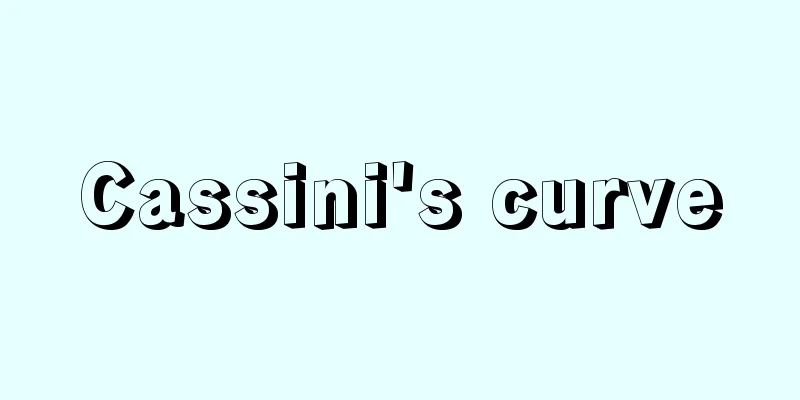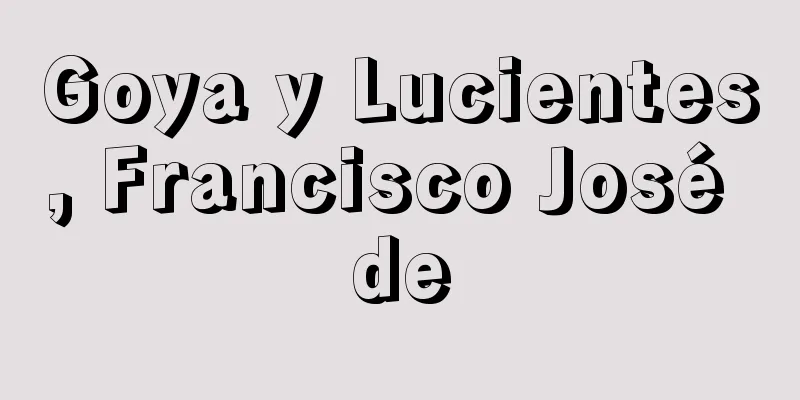Sonata (English spelling) sonata English

|
A term in Western music. It can be translated as "sonate." It comes from the Italian word sonare, meaning "to play," and refers to a certain type of instrumental music. However, the meaning and content of this term varies greatly depending on the era, and it has a history of unstable meanings and a period of decline in which its usage became confused, making it difficult to explain the term as a unified concept. The use of the word sonata is said to date back to the 13th century, but it was only in the mid-16th century, when independent instrumental music became popular, that it was used as a title for a piece of music. However, for about a century until the mid-17th century, it was almost impossible to find any consistent meaning for the word, and the connection with the meaning and content of the word, which would become clearer later, was not clear. However, by the mid-17th century, the word began to indicate a relatively clear concept. It was an ensemble music performed by several voices, such as the violin, and consisted of several parts (movements) with different tempos and beats. It was performed in churches or courts (indoors), and eventually the type of sonata was divided into two depending on the place. The early development of the sonata was centered in Italy, but it gradually spread to various parts of Europe, and it is thought that the division into two different types was due in no small part to the influence of Germany and other countries. One is called sonata da chiesa (church sonata), which consists of three to five movements, combining a solemn movement, a fugal movement, a slow ornamental movement, and a fast dance-like movement. It is characterized by sharp contrasts in tempo, meter, and mood, but the tonality remains constant. Later, a four-movement structure of slow-fast-slow-fast became typical. The other type is called sonata da camera (chamber sonata), which is based on a series of contrasting dances, but other elements may also be included, and the arrangement of the dances may follow a certain pattern. In this case, too, one of the characteristics is that the entire piece is unified by the same key. These two types of movement structure are often performed by three voices, two melodic instruments and a basso continuo, and a performance form called a trio sonata (sonata a tre) was particularly popular during the Baroque period. However, in the 18th century and the later Baroque period, the solo sonata (sonata a due), with a single melodic instrument and a basso continuo, became more and more popular. Already in the first half of the 18th century, attempts were made to create a new type of sonata. Even if at first (and sometimes later) they were not necessarily called sonatas, this marks the beginning of the history of the classical and romantic sonatas, or what we today primarily think of as sonatas. This new type of sonata also seems to have originated in Italy. In its turn, the clavier played an important role in its development. Many two-, three- or four-movement compositions with various combinations of movements appeared for this instrument, which at first were called partitas, divertimento, etc., and then, about two-thirds of the 18th century, they were called sonatas exclusively. At that time, sonatas for the clavier were mostly composed of three movements, fast-slow-fast, using a method of musical formation that would later be called sonata form, or in Vienna and other places, a three-movement structure with a minuet in the second or third movement. The violin was added to this type, initially as an optional addition, but later as a required addition, and the violin sonata was born. Similarly, the addition of the violin and cello gave birth to sonatas for three instruments, later called piano trios. However, the classical sonata as a new multi-movement form was shaped along with the birth and development of the classical style, and was also influenced by the symphony, quartet, concerto, and other new works that were born at the same time. Thus, this genre, which is not usually called sonata as a title, as well as the original sonata, can be said to be supported by a principle unique to this era in terms of the arrangement of movements and the basic structure of each movement, ignoring the differences in instrumentation. Later generations have tried to capture this principle with words such as the concept of sonata or the multi-movement formation of a sonata, Sonatenzyklus. From the perspective of this "sonata as a concept," a symphony is a sonata for an orchestra, and a piano concerto is a sonata for piano and orchestra. In reality, the sonata has four movements as its backbone: (1) a fast movement in sonata form, (2) a slow movement in various forms, (3) a minuet or scherzo, and (4) a fast movement in various forms. Some genres, such as the concerto, lack one of the movements (for example, the absence of (3) is the original form), some add more movements, and some arrange them in a different order. The sonata principle had an almost absolute influence on European instrumental music until the 20th century. [Shigeo Osaki] [References] | |Source: Shogakukan Encyclopedia Nipponica About Encyclopedia Nipponica Information | Legend |
|
西洋音楽用語。「奏鳴曲」の訳語がある。イタリア語で「奏する」という意味のソナーレsonareに由来し、器楽曲のある種のタイプを意味する。しかしこの語によって示される意味内容は時代によって大きく異なり、さらにこれには意味の安定しない前史があり、また使用法が混乱していく衰退期があって、この用語を統一した概念として説明するのは困難である。 ソナタということばの使用例は、さかのぼれば13世紀まで行き着くといわれているが、この語が楽曲の表題として用いられるのは、独立した器楽曲が盛んになる16世紀中期以後のことである。しかしその後17世紀中期までの1世紀ほどの間は、この語の意味するところに何かまとまった傾向を見いだすのはほとんど不可能であるし、またのちに鮮明になってくるこの語の意味内容とのつながりも明確ではない。しかし17世紀中ごろになると、このことばによってある程度はっきりした概念が示されるようになった。それはバイオリンなどの何声部かによって実現される合奏音楽で、テンポや拍子の異なったいくつかの部分(楽章)からなるものであった。演奏される場所は教会か宮廷(室内)であって、やがてその場所に応じてソナタのタイプは二分されていった。こうしたソナタの初期の発展はイタリアを中心に展開されたが、しだいにヨーロッパの各地に広まり、ことに二つの異なったタイプに分かれるのには、ドイツなどの影響も少なくなかったと思われる。 一つはソナタ・ダ・キエザsonata da chiesa(教会ソナタ)とよばれるもので、これは荘重な楽章、フーガ風な楽章、テンポの遅い装飾的な楽章、テンポの速い舞曲風な楽章などを組み合わせた三ないし五楽章からなる。テンポ、拍子、情調などの鋭い対比をその大きな特徴としているが、調性は変わることがない。のちに緩―急―緩―急という四楽章構成が典型的にみられるようになった。 もう一つのタイプはソナタ・ダ・カメラsonata da camera(室内ソナタ)とよばれるもので、各種の舞曲を対照的に連ねたものを基本とするが、舞曲以外のものがそこに入り込むこともあり、また舞曲の配列の仕方に、ある種の規範が認められることもある。この場合も、同一の調性によって全曲が統一されているということが特色の一つになっている。このような2種の楽章構成のタイプは、二つの旋律楽器と通奏低音という三声部によって演奏されることが多く、トリオ・ソナタsonata a treとよばれる演奏形態はバロック時代にとりわけ好まれた。しかし18世紀に入ってバロック時代も後期になると、単一の旋律楽器と通奏低音によるソロ・ソナタsonata a dueのほうが優位になっていく。 18世紀前半にすでに新しいタイプのソナタが試みられる。それは初めのうちは(ものによっては後になっても)かならずしもソナタと直接称されてはいなかったとしても、今日私たちが古典派やロマン派のソナタ、あるいは第一義的にソナタと概念化しているものの歴史がここに始まるのである。この新しいソナタのタイプもまたイタリアを発祥の地としているように思われる。そして今度はクラビア(有弦鍵盤(けんばん)楽器)がその発展に重要な役割を果たしている。さまざまな楽章を組み合わせた二楽章、三楽章、四楽章のものが、この楽器のために初めのうちはパルティータ、ディベルティメントなどといった名前で多く現れ、18世紀の3分の2が経過したころから、もっぱらソナタという名称をもつようになった。このころクラビアのためのソナタは、のちにソナタ形式とよばれる楽曲形成法による急速楽章―緩徐楽章―急速楽章という三楽章構成か、ウィーンなどでは上記の第二楽章もしくは第三楽章にメヌエットが入った三楽章構成に、ほぼ固まっていたように思われる。このタイプにバイオリンが、初めのうちは任意参加の形で、やがて必須(ひっす)のものとして加わることによってバイオリン・ソナタが成立した。同様にバイオリンとチェロが加わることによって、のちにピアノ・トリオとよばれる、三つの楽器のためのソナタが生まれた。 しかしこうした新しい多楽章形式としての古典派ソナタは、古典派様式の生成と発展とともに形を整えられていったのであるが、それはさらに、同じころにほぼ並行して新しく誕生してきたシンフォニーやクァルテットやコンチェルトなどとも互いに影響を受け合った。そうして、楽曲のタイトルとして普通はソナタと名づけられなかったこのようなジャンルも、また本来のソナタも、楽器編成の違いを度外視すれば、楽章配列や各楽章の基本的構造などの点で、この時代特有の一つの原理に支えられているといってよいことになる。後世はその原理をソナタという概念、あるいはソナタ多楽章形成Sonatenzyklusといったことばでとらえようとする。この「概念としてのソナタ」からいえば、シンフォニー(交響曲)はオーケストラのためのソナタであり、ピアノ・コンチェルト(ピアノ協奏曲)はピアノとオーケストラのためのソナタ、ということになる。その実体は、〔1〕ソナタ形式による急速楽章、〔2〕種々の形式による緩徐楽章、〔3〕メヌエットないしスケルツォ、〔4〕種々の形式による急速楽章、という四つの楽章を多楽章構成の骨格とし、どれかの楽章を欠いていたり(たとえばコンチェルトのように〔3〕を欠いているのが本来の形であるというジャンルもある)、より多くの楽章が付加されたり、配列の順序が異なったり、という幅の広いものである。こうしたソナタの原理は、20世紀に入るまでヨーロッパの器楽にほとんど絶対的な影響力をもった。 [大崎滋生] [参照項目] | |出典 小学館 日本大百科全書(ニッポニカ)日本大百科全書(ニッポニカ)について 情報 | 凡例 |
Recommend
Wang Zhaojun - Oushoukun
Date of birth and death unknown. A palace lady of...
The Three Great Men of the Meiji Restoration
The three men were the leaders of the Meiji Restor...
Ryuju
An Indian Buddhist monk who lived around 150-250. ...
Utricularia - Utricularia
A perennial plant of the Utricularia family (APG ...
Society for Promoting Christian Knowledge
…These schools were run by the children's par...
Tachyphylaxis
Also known as quick habit formation. Unlike drug t...
al-Maks (English spelling)
…The biggest change was the change in the river p...
Sugaya Hallway - Kankeroka
...The last six volumes are written in prose. The...
Rehabilitation engineering
A field of medical engineering that researches and...
Combinatorics
A branch of mathematics that considers the number ...
Desert pavement
...the vertical cross section is parallel to the ...
Selenium dioxide - Nisanka selenium
The chemical formula is SeO2 . It is produced by d...
Fushinosho
A manor in Yoshiki District, Suo Province (present...
Ueda Tsumugi
This is a type of tsumugi fabric made in the Ueda...
Toyotake Rosho
Year of death: June 7, 1930 Year of birth: August ...



![Hojo [town] - Hojo](/upload/images/67ccd3761673e.webp)





